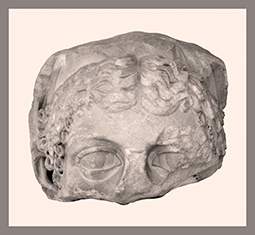Autore: R. Belli Pasqua
Scarica l’articolo in formato .pdf: Honours for the Julio-Claudians in Cos. Some brief notes
 Da Cos proviene una serie di iscrizioni in onore di Augusto e dei membri della casa giulio-claudia, messe in luce a partire dalle ricerche archeologiche sull’isola nel XIX secolo. Le epigrafi mostrano una discreta continuità nel tempo e riguardano non solo il princeps, ma anche i membri della sua famiglia. I principali demi dell’isola appaiono coinvolti in questo processo di interazione oltre alla polis più rappresentativa, Kos, nata a seguito del metecismo. I damoi si qualificano come i principali committenti delle dediche, che si configurano quindi per il carattere pubblico e collettivo; si discostano da questa modalità le dediche fatte da singoli membri delle élites locali, come nel caso delle dediche a Nerone fatte da Gaio Stertinio Senofonte. Di frequente la dedica accompagna una statua raffigurante il destinatario, lo stesso princeps o uno dei membri della domus Augusta, in forma assimilata ad una divinità; quest’ultima compare in associazione al nome nel testo epigrafico; i documenti esaminati mostrano che, nel contesto di Cos, in questa prassi sono coinvolte le principali divinità dell’isola: Asklepios, Apollo, Afrodite, Artemide, Leto, Demetra, Rhea e Homonoia. Le epigrafi in questione sono state spesso prese in esame dalla critica scientifica, ma una loro lettura complessiva e aggiornata può suggerire utili elementi di riflessione sulle modalità e sull’interazione tra il potere centrale e la comunità locale greca in età romana.
Da Cos proviene una serie di iscrizioni in onore di Augusto e dei membri della casa giulio-claudia, messe in luce a partire dalle ricerche archeologiche sull’isola nel XIX secolo. Le epigrafi mostrano una discreta continuità nel tempo e riguardano non solo il princeps, ma anche i membri della sua famiglia. I principali demi dell’isola appaiono coinvolti in questo processo di interazione oltre alla polis più rappresentativa, Kos, nata a seguito del metecismo. I damoi si qualificano come i principali committenti delle dediche, che si configurano quindi per il carattere pubblico e collettivo; si discostano da questa modalità le dediche fatte da singoli membri delle élites locali, come nel caso delle dediche a Nerone fatte da Gaio Stertinio Senofonte. Di frequente la dedica accompagna una statua raffigurante il destinatario, lo stesso princeps o uno dei membri della domus Augusta, in forma assimilata ad una divinità; quest’ultima compare in associazione al nome nel testo epigrafico; i documenti esaminati mostrano che, nel contesto di Cos, in questa prassi sono coinvolte le principali divinità dell’isola: Asklepios, Apollo, Afrodite, Artemide, Leto, Demetra, Rhea e Homonoia. Le epigrafi in questione sono state spesso prese in esame dalla critica scientifica, ma una loro lettura complessiva e aggiornata può suggerire utili elementi di riflessione sulle modalità e sull’interazione tra il potere centrale e la comunità locale greca in età romana.
A series of inscriptions in honour of Augustus and the members of the Julio-Claudian house has been brought to light in Cos, starting from the archaeological research on the island in the 19th century. The inscriptions show a discrete continuity over time and concern not only the princeps but also members of his family. The main demes of the island appear to have been involved in this process of interaction between the local élites and the imperial family, and, of course, the most representative polis, Kos, arisen from the metoecism. Honorary and dedicatory epigraphs are attested; the damoi appear to be the main commissioners of the dedications, which are therefore marked by a public and collective nature. Dedications were also made by individual members of the local élite, as in the case of the dedications to Nero made by Gaius Stertinius Xenophon. Frequently the dedication accompanies a statue of the addressee, namely the princeps or a member of the domus Augusta; in some cases the princeps and the members of the imperial house are assimilated to gods, whose divine appellations or epicleses are associated with the human names in the considered epigraphical texts; the documents examined show that, in the context of Cos, the main deities of the island were involved in this practice: Asklepios, Apollo, Aphrodite, Artemis, Leto, Demeter, Rhea and Homonoia. These epigraphs have often been examined by scholarly critics, but a comprehensive and up-to-date reading of them may suggest useful elements for reflection on the modalities and interaction between the central power and the local Greek community in the Roman age.
